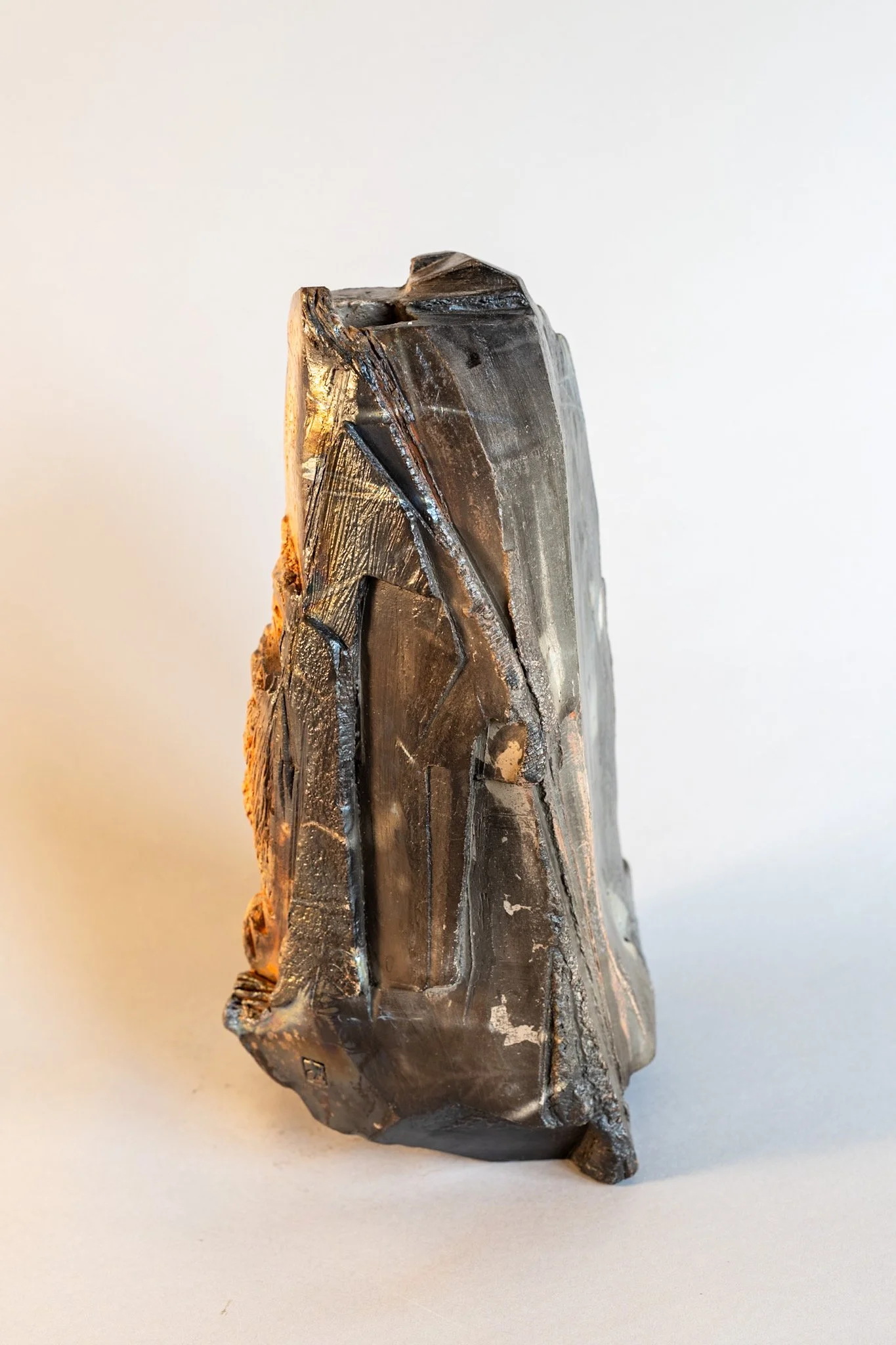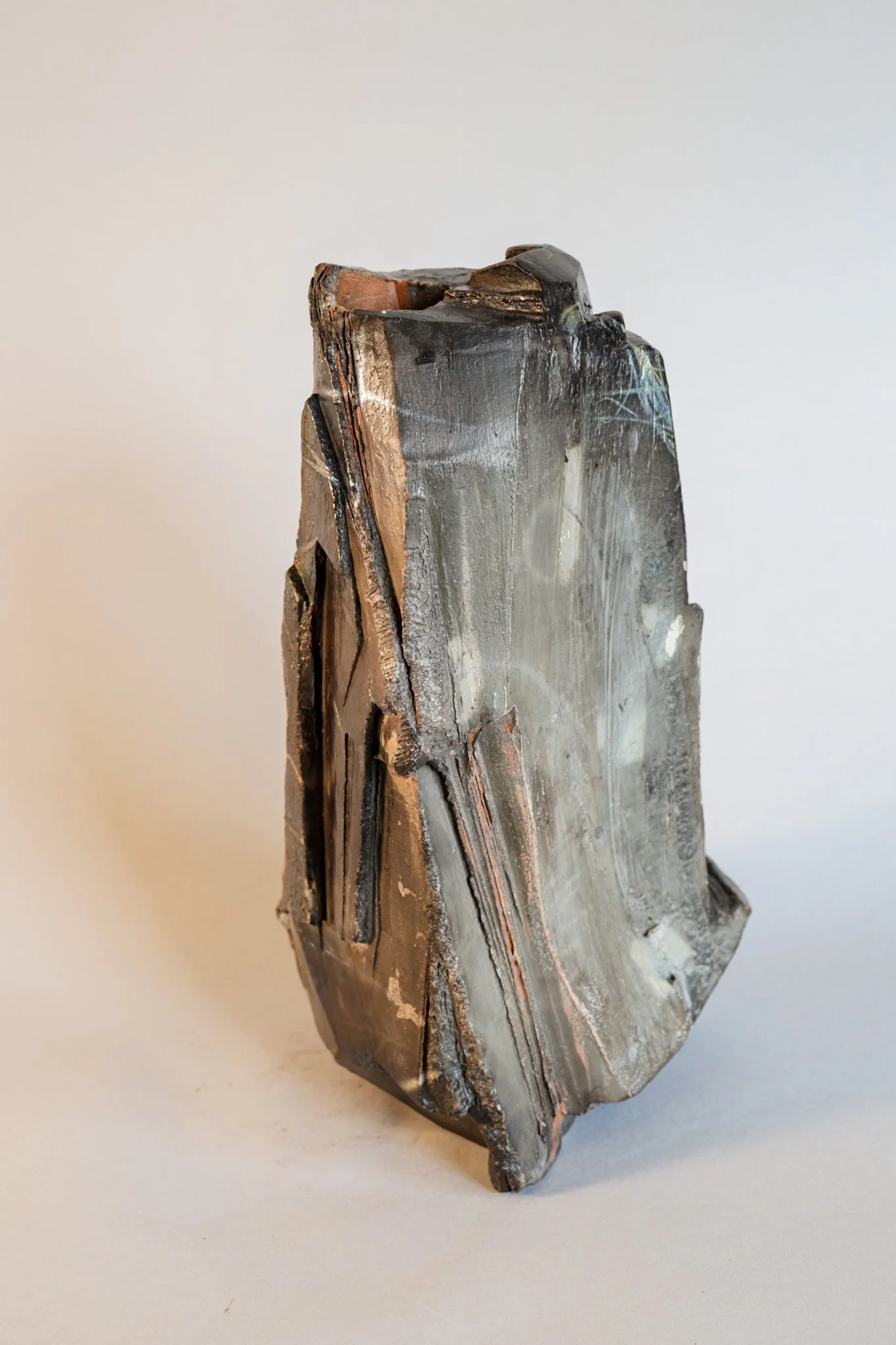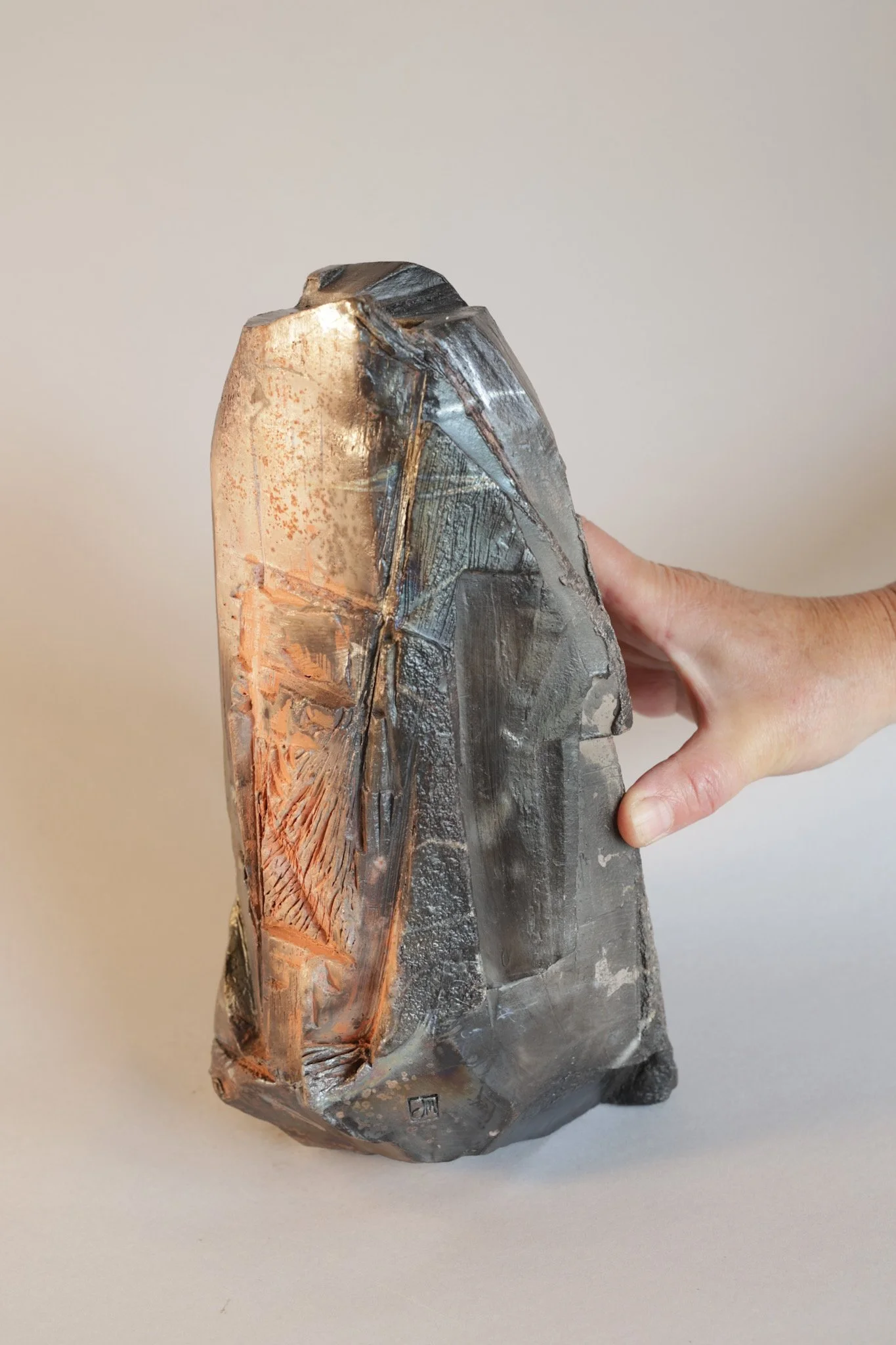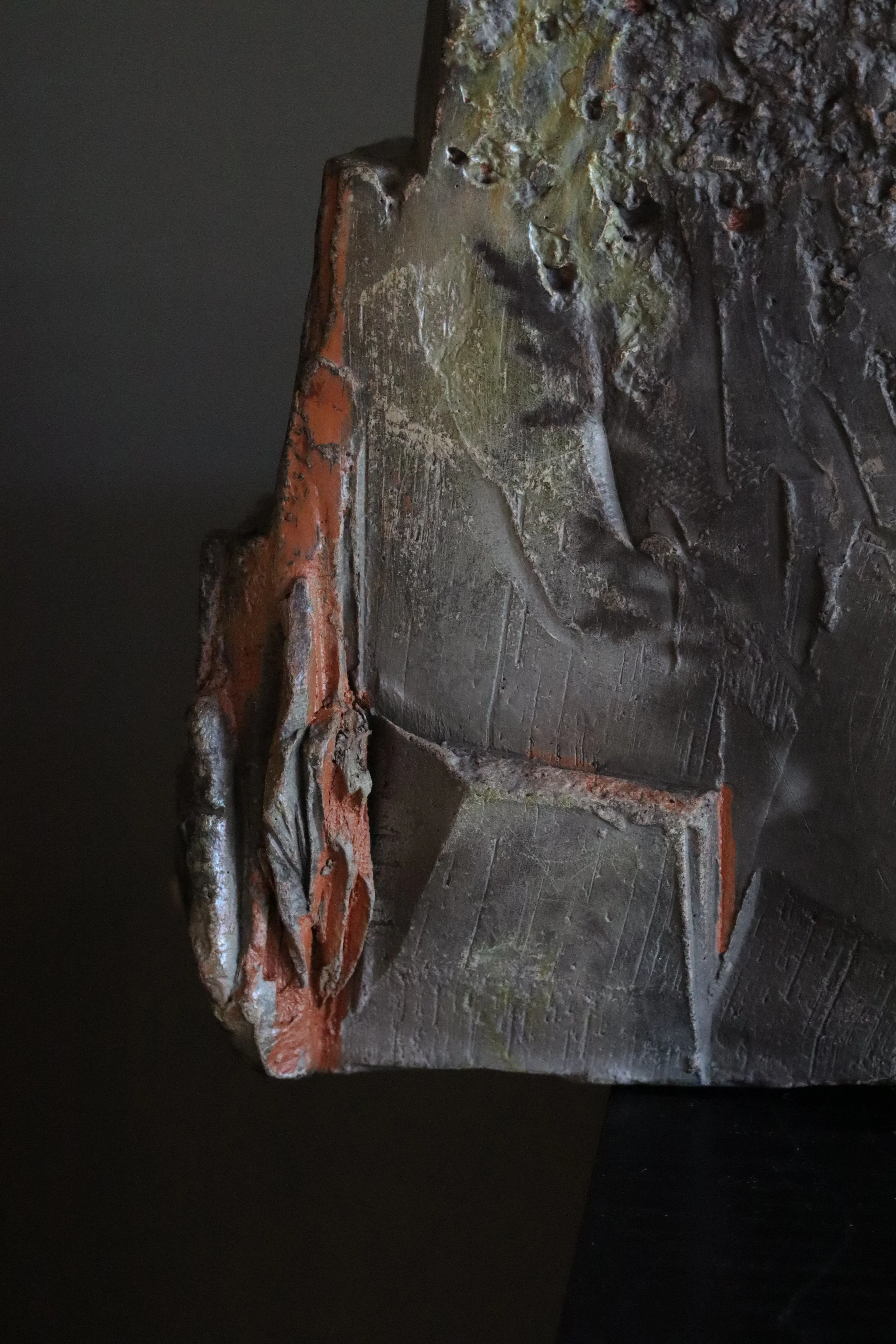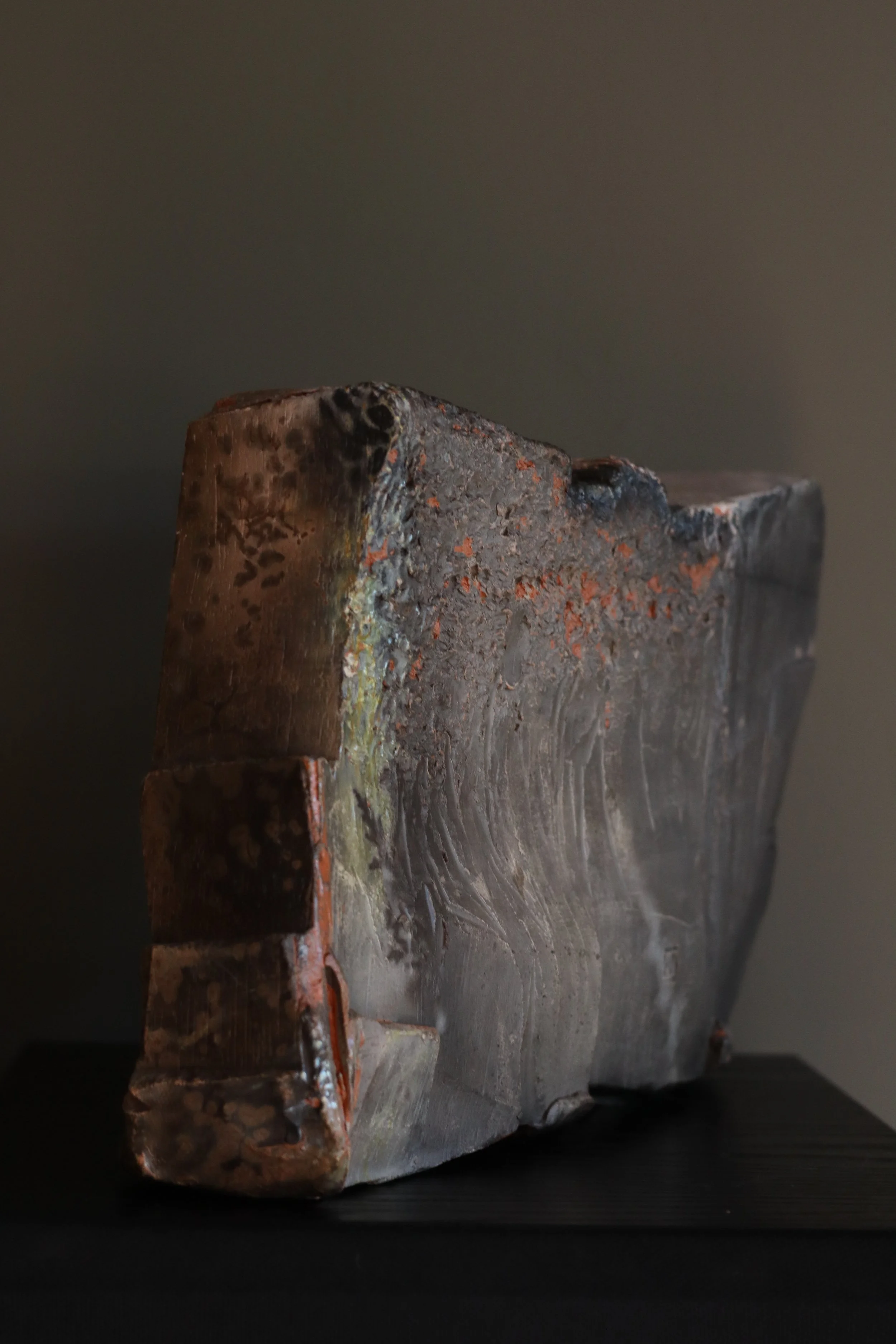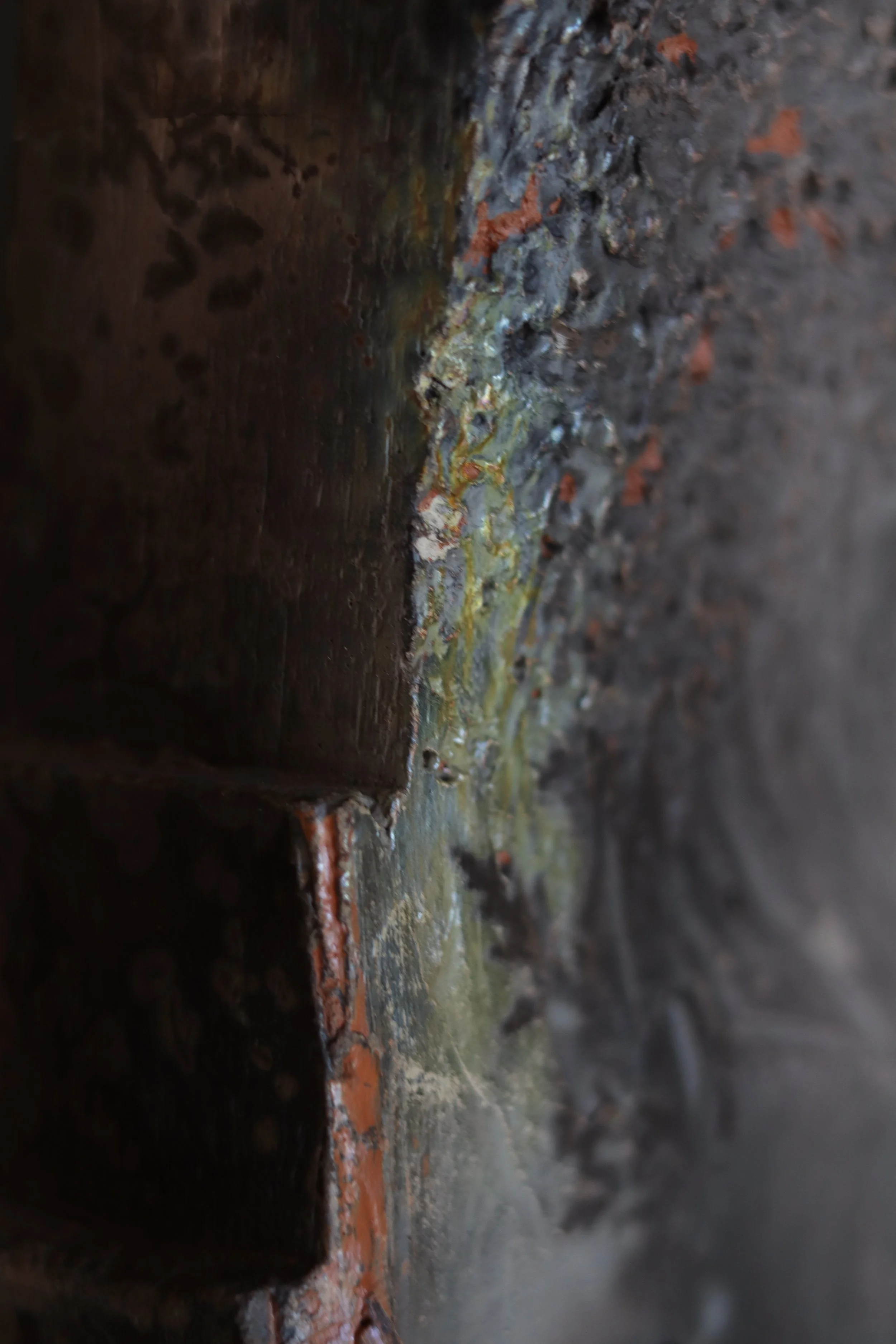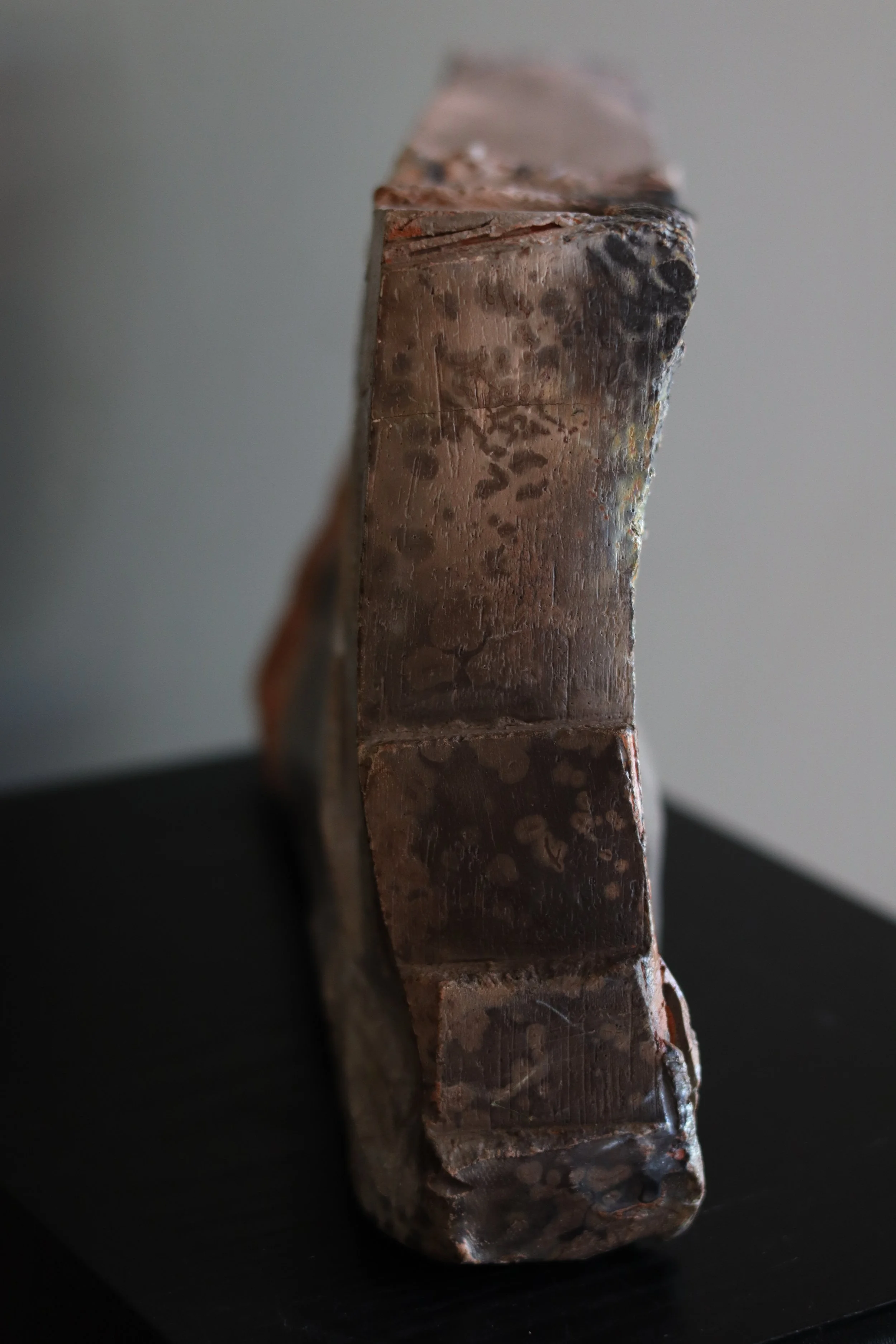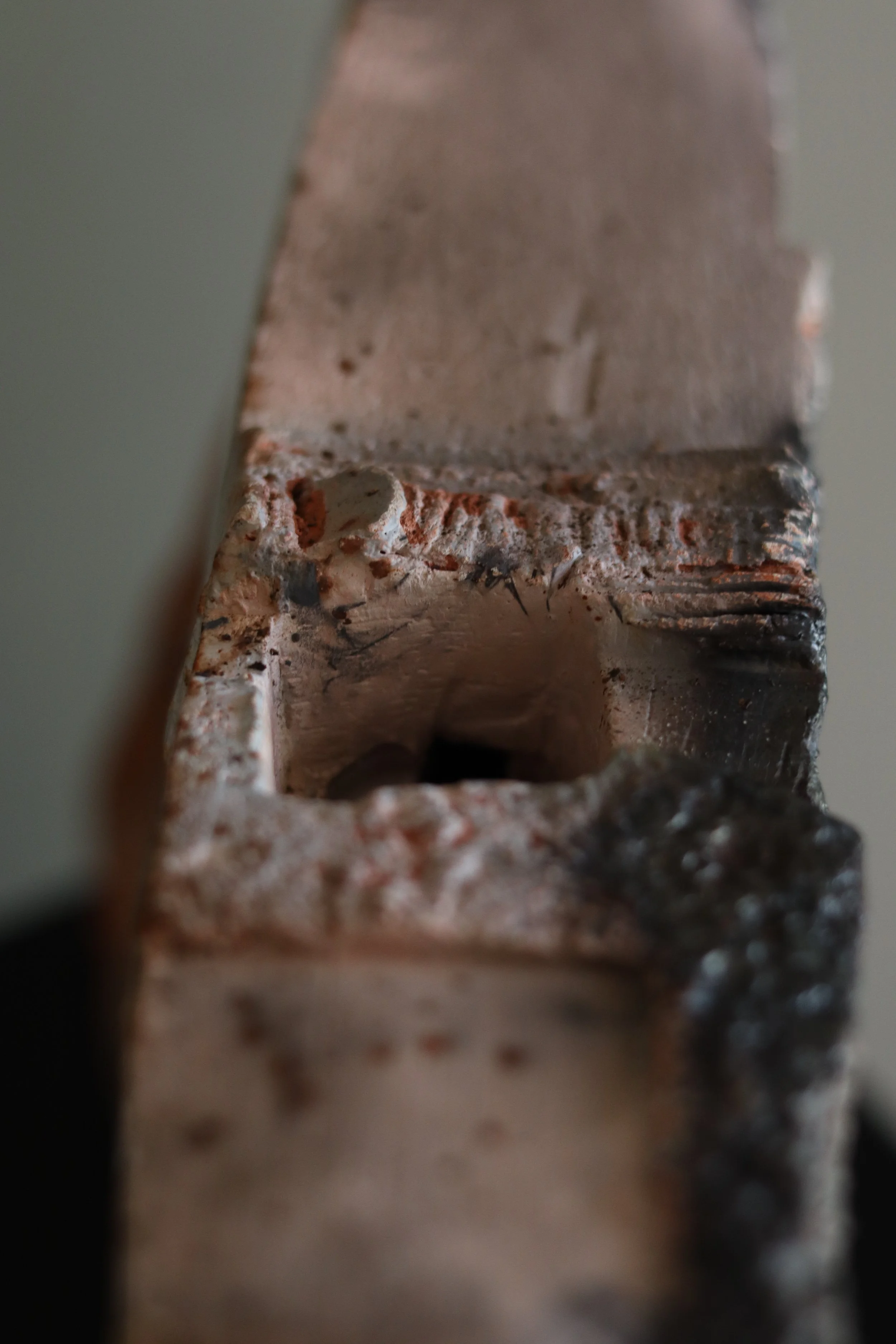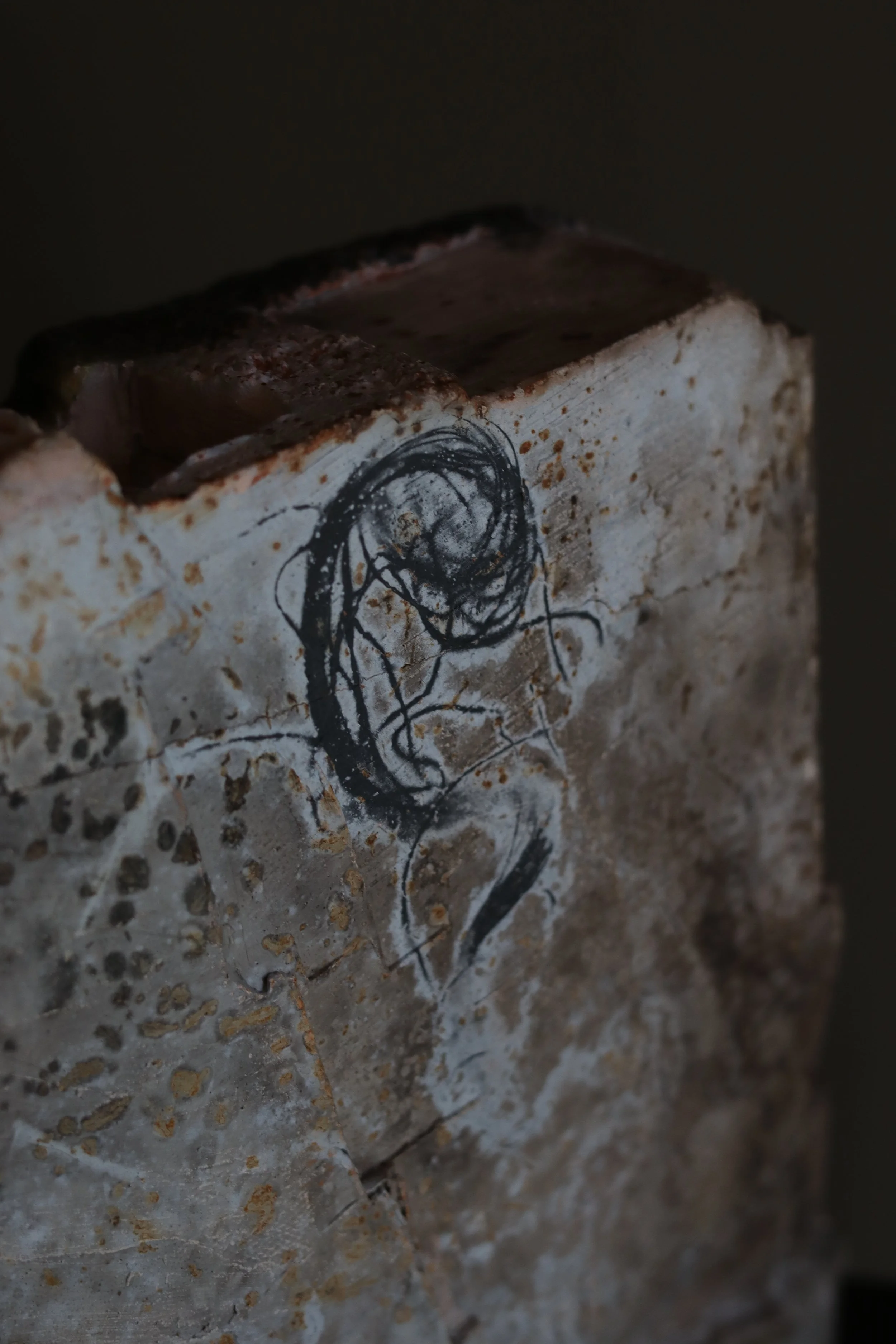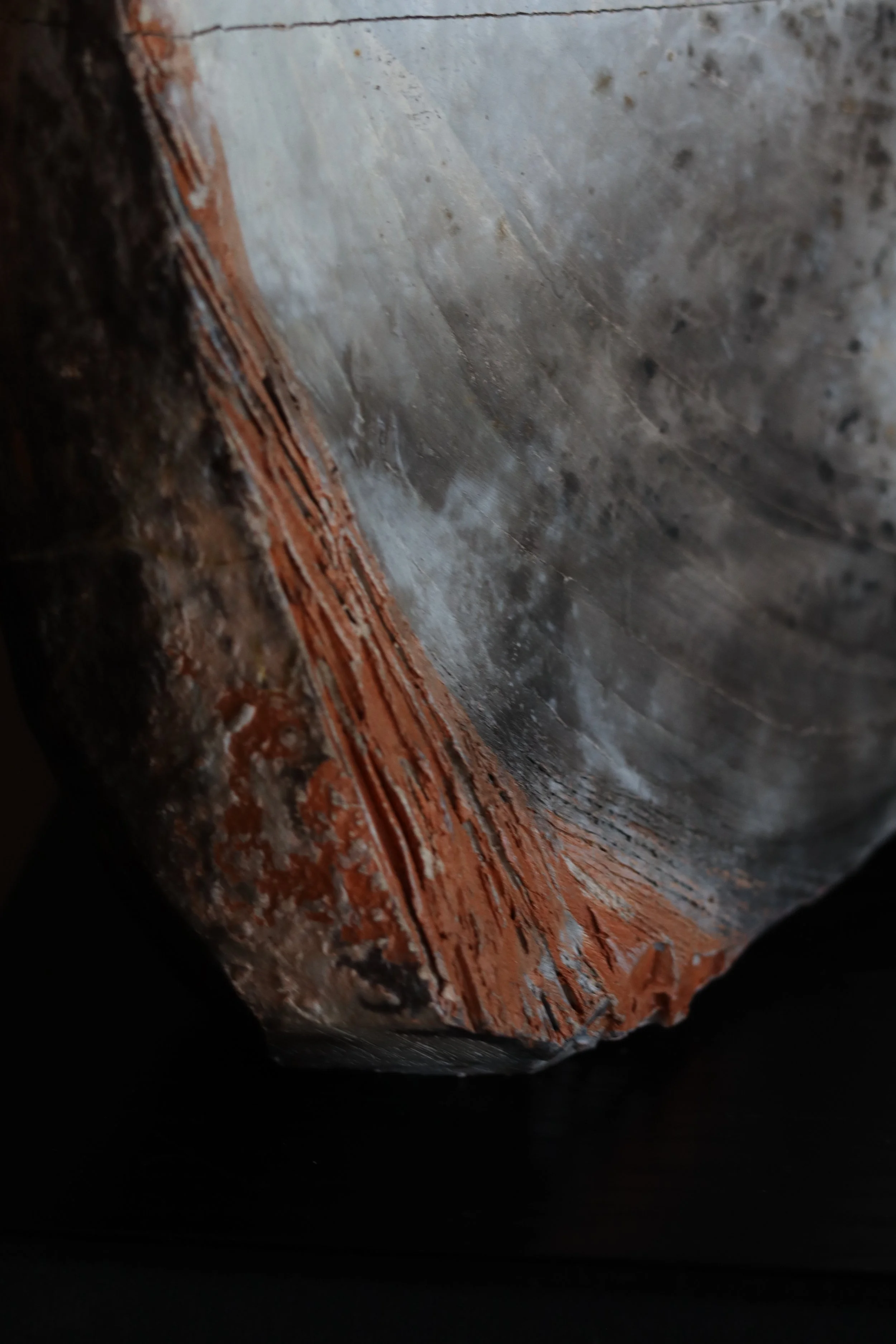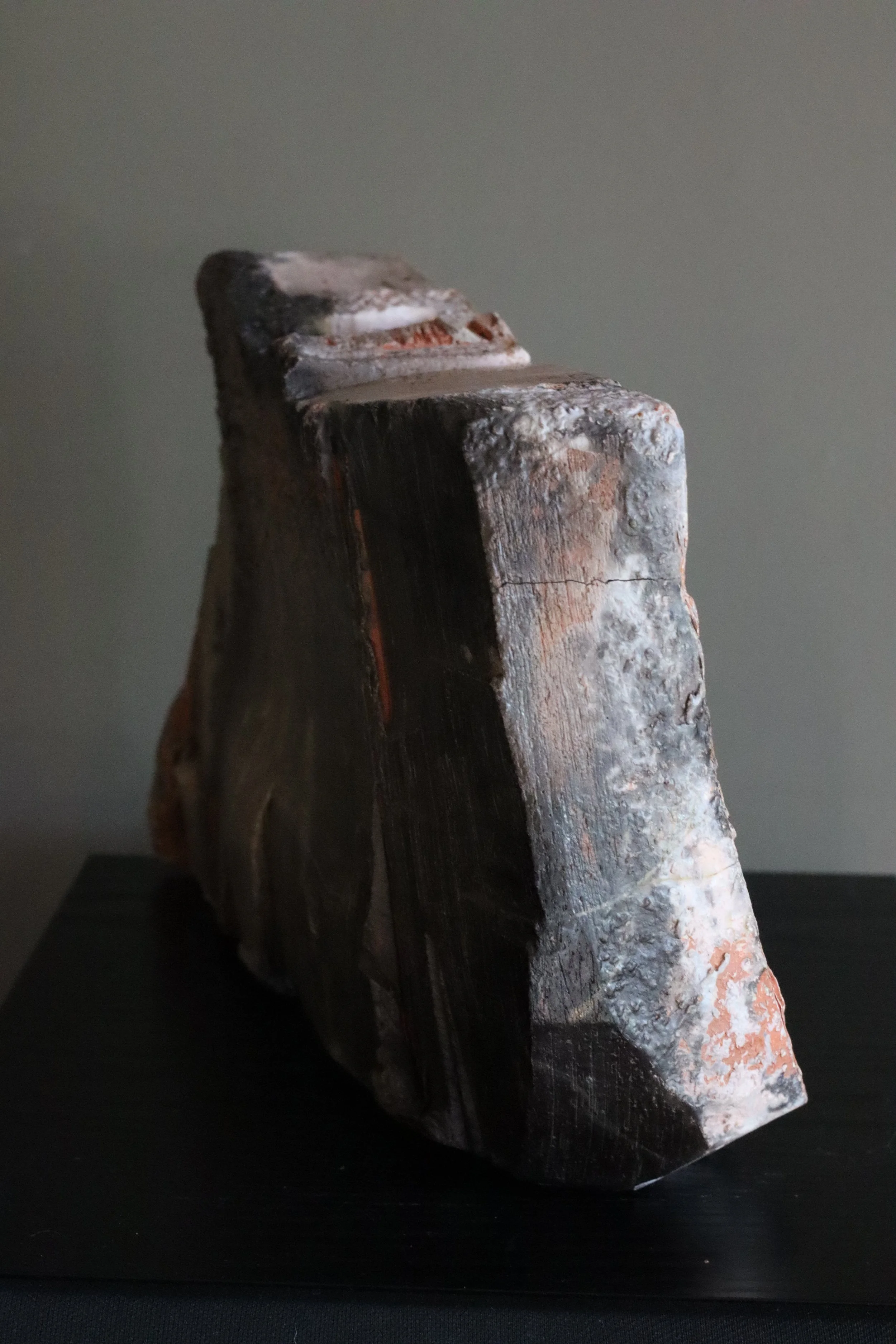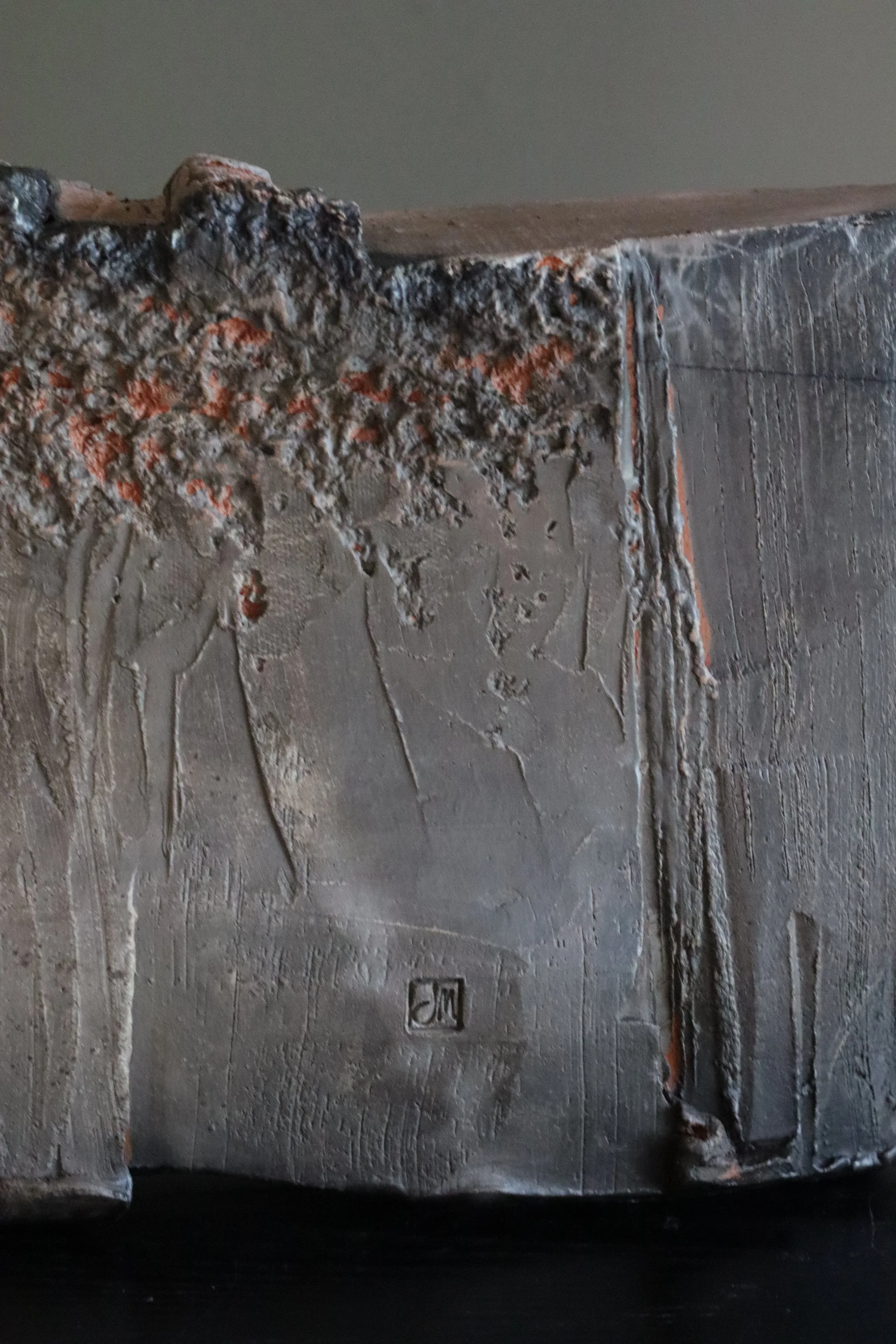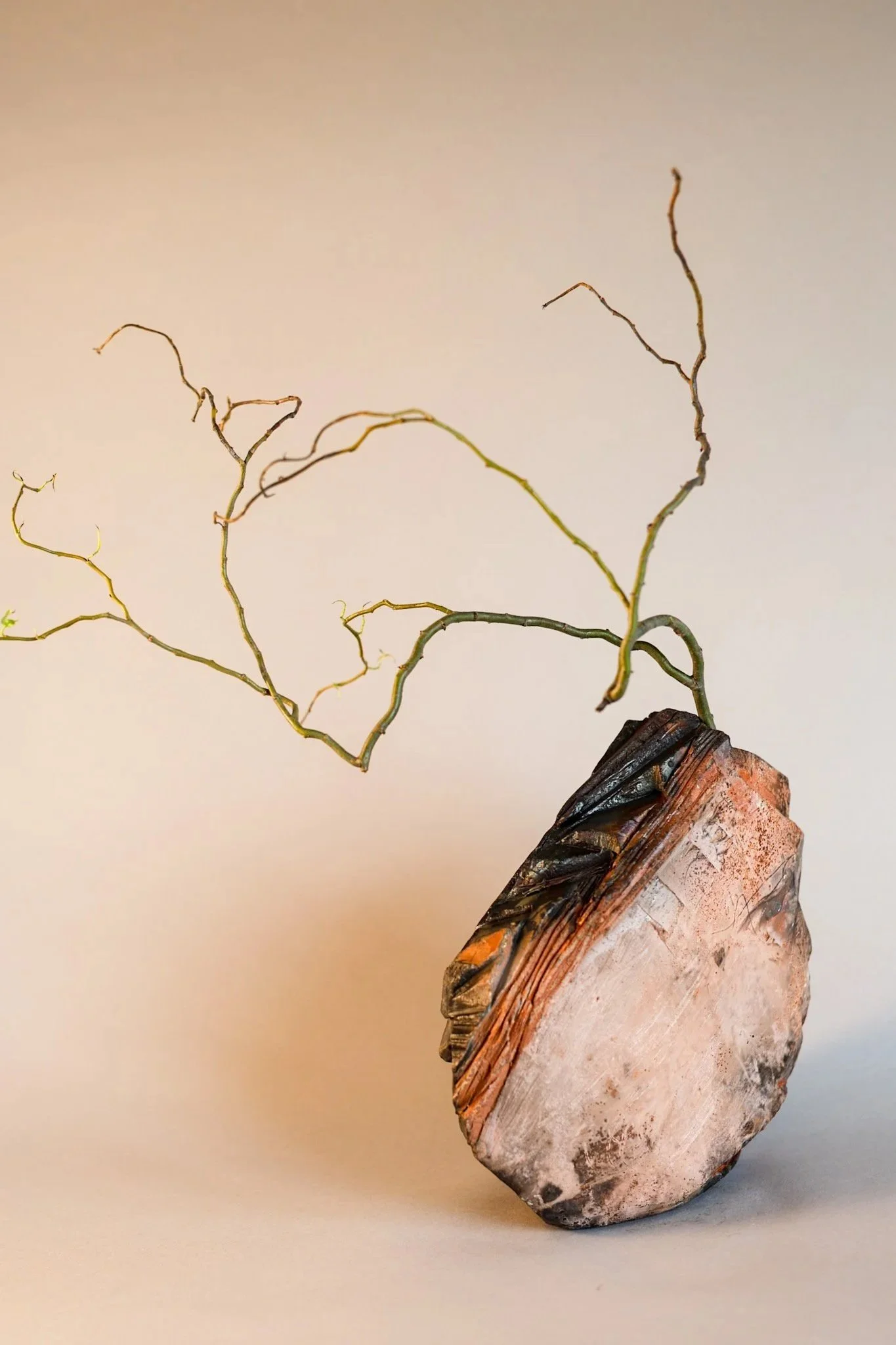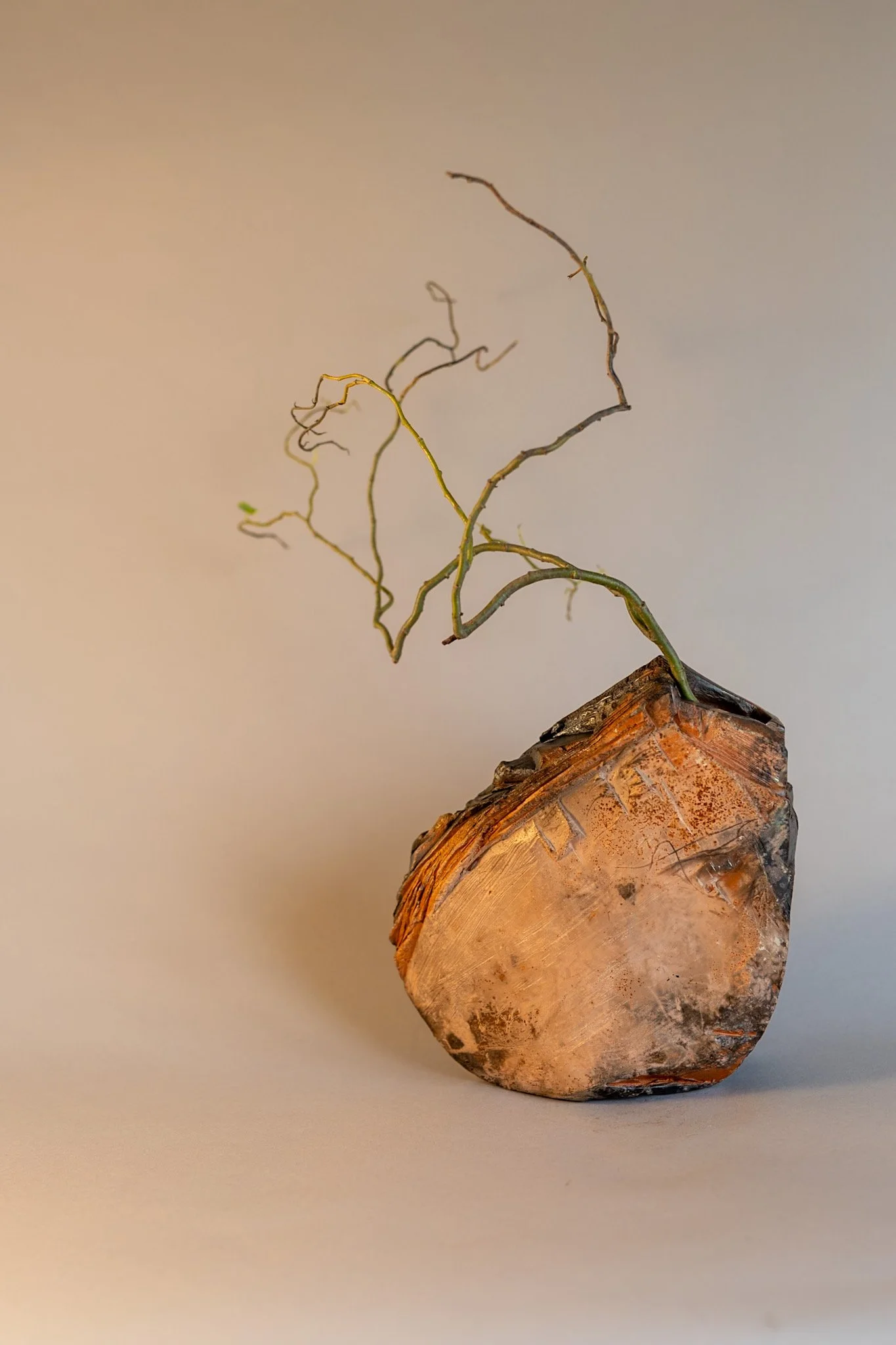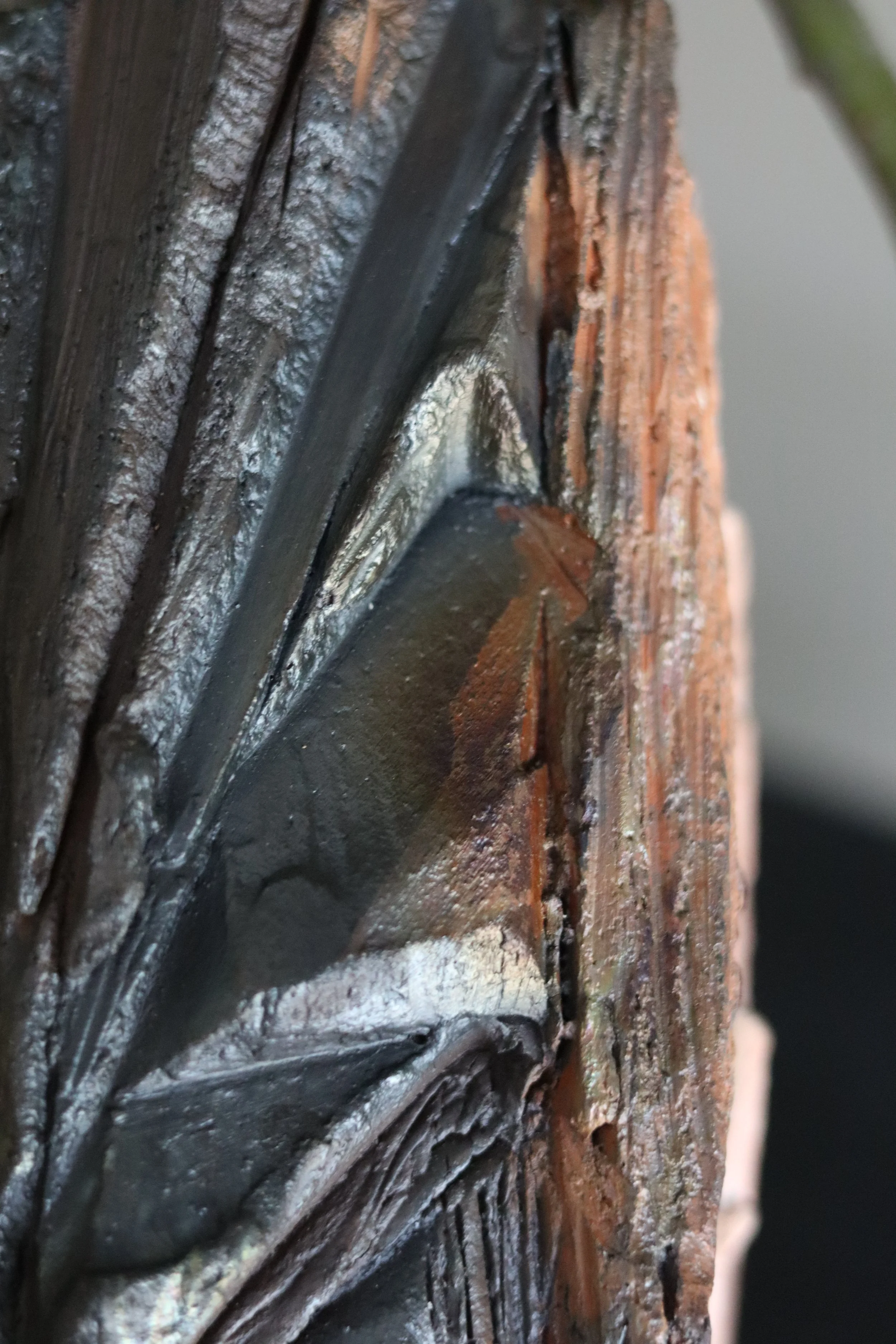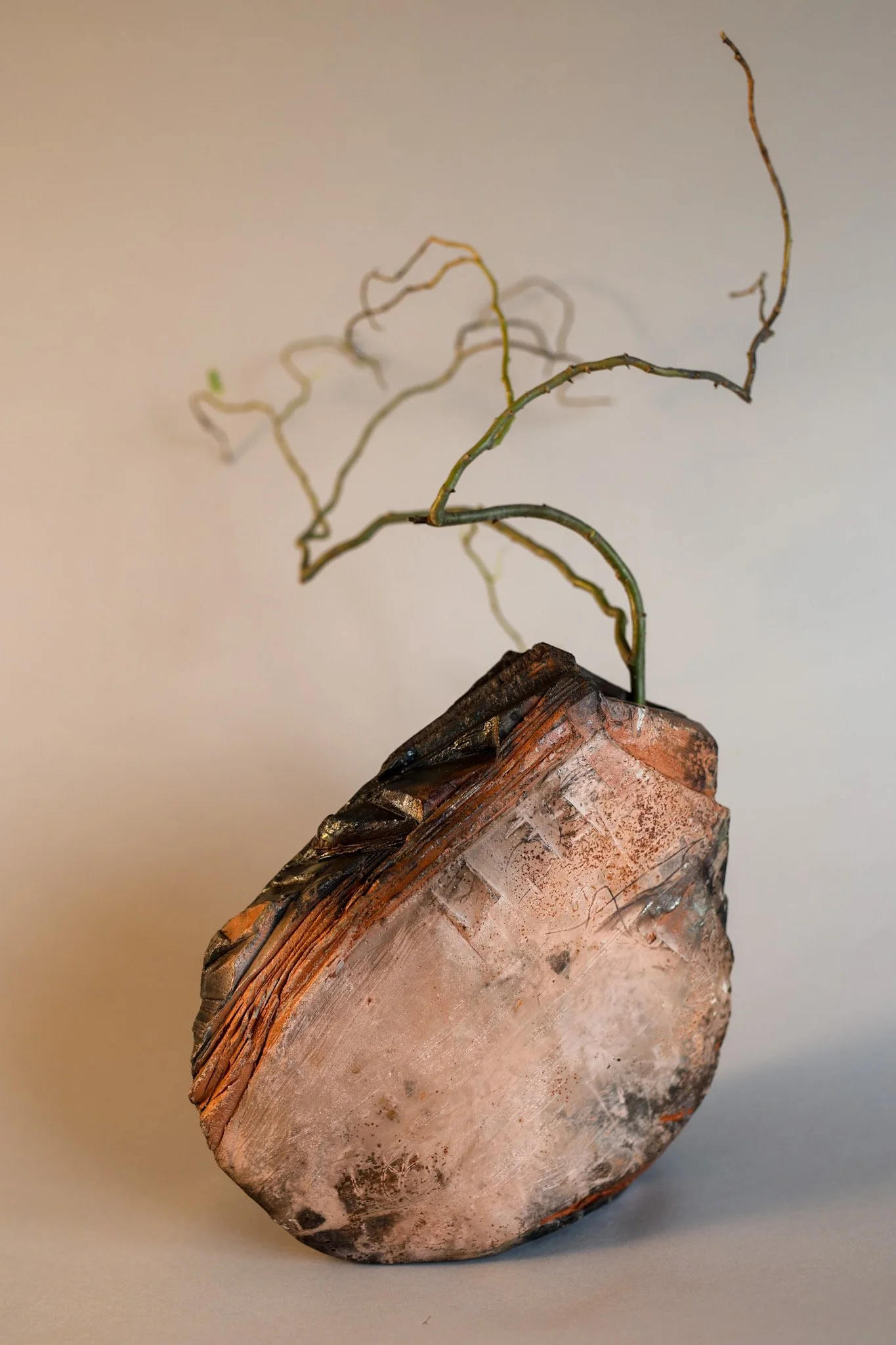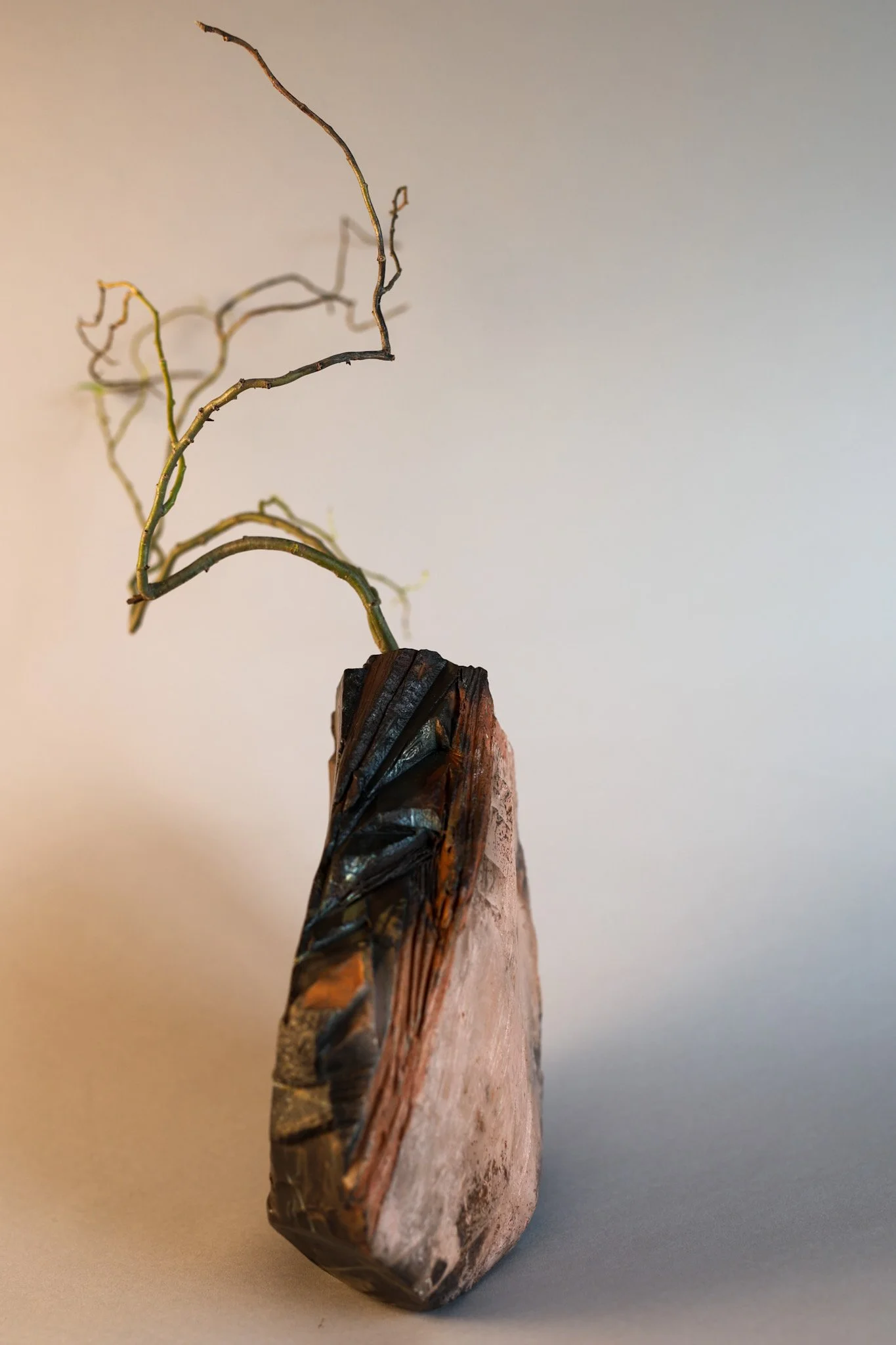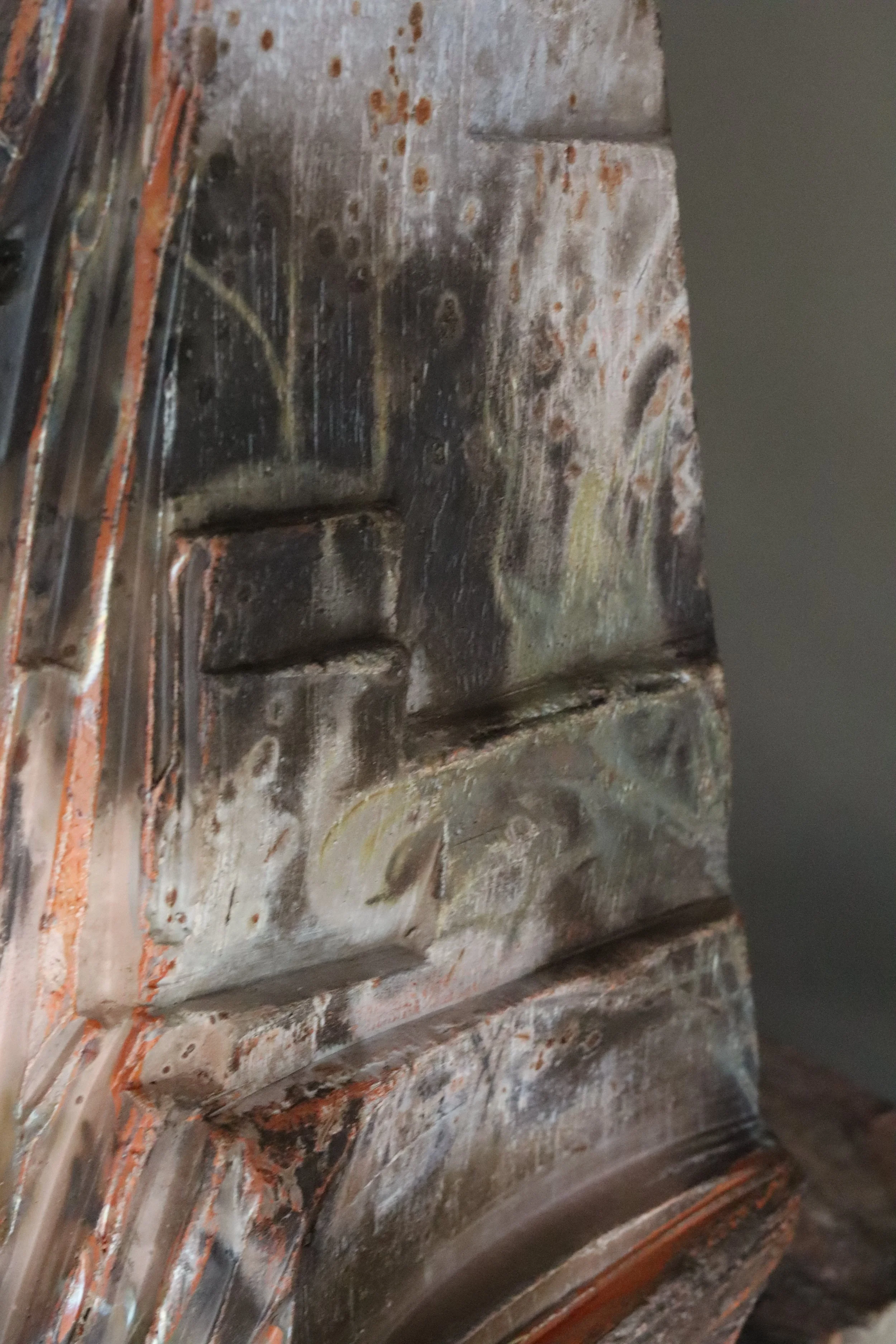

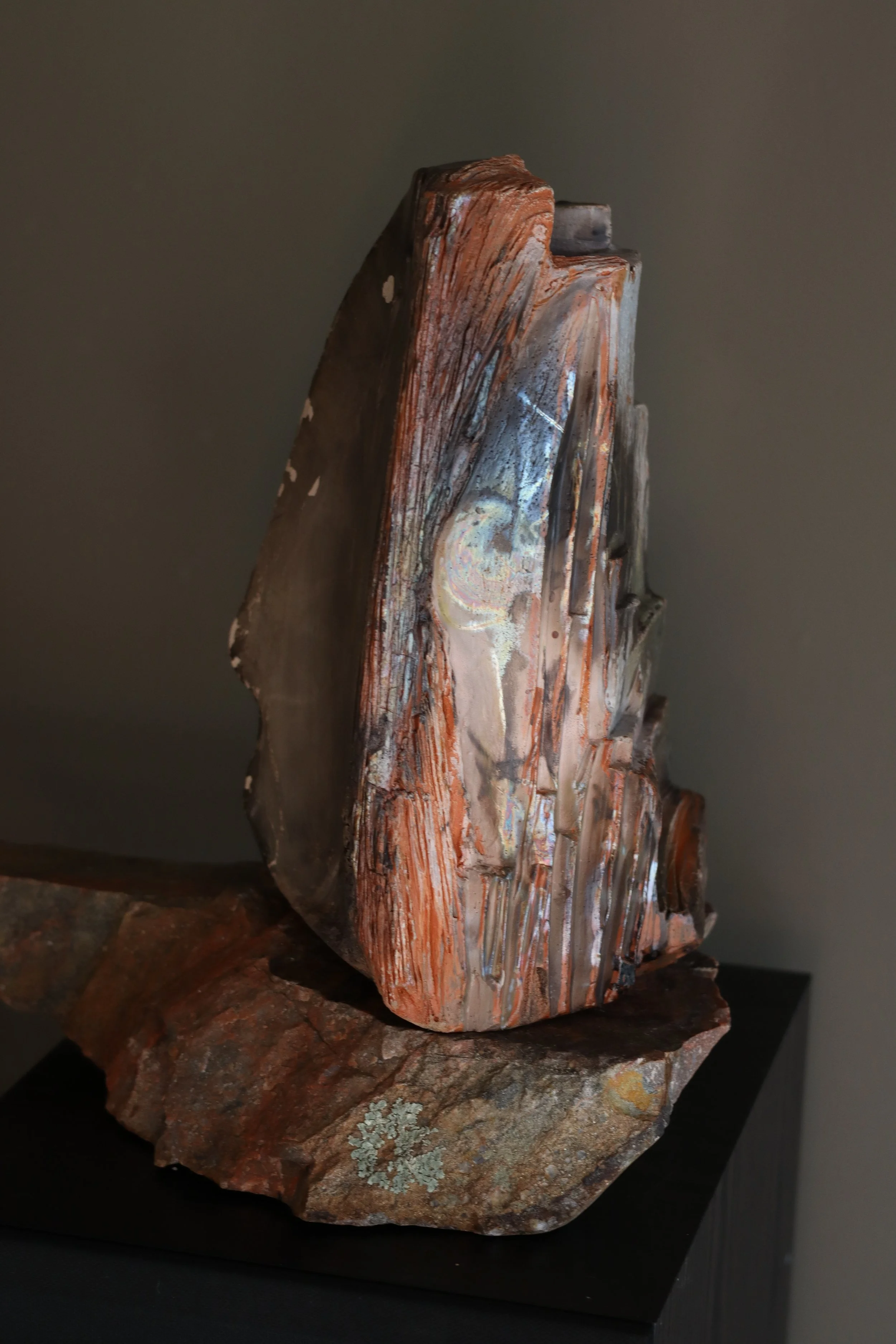
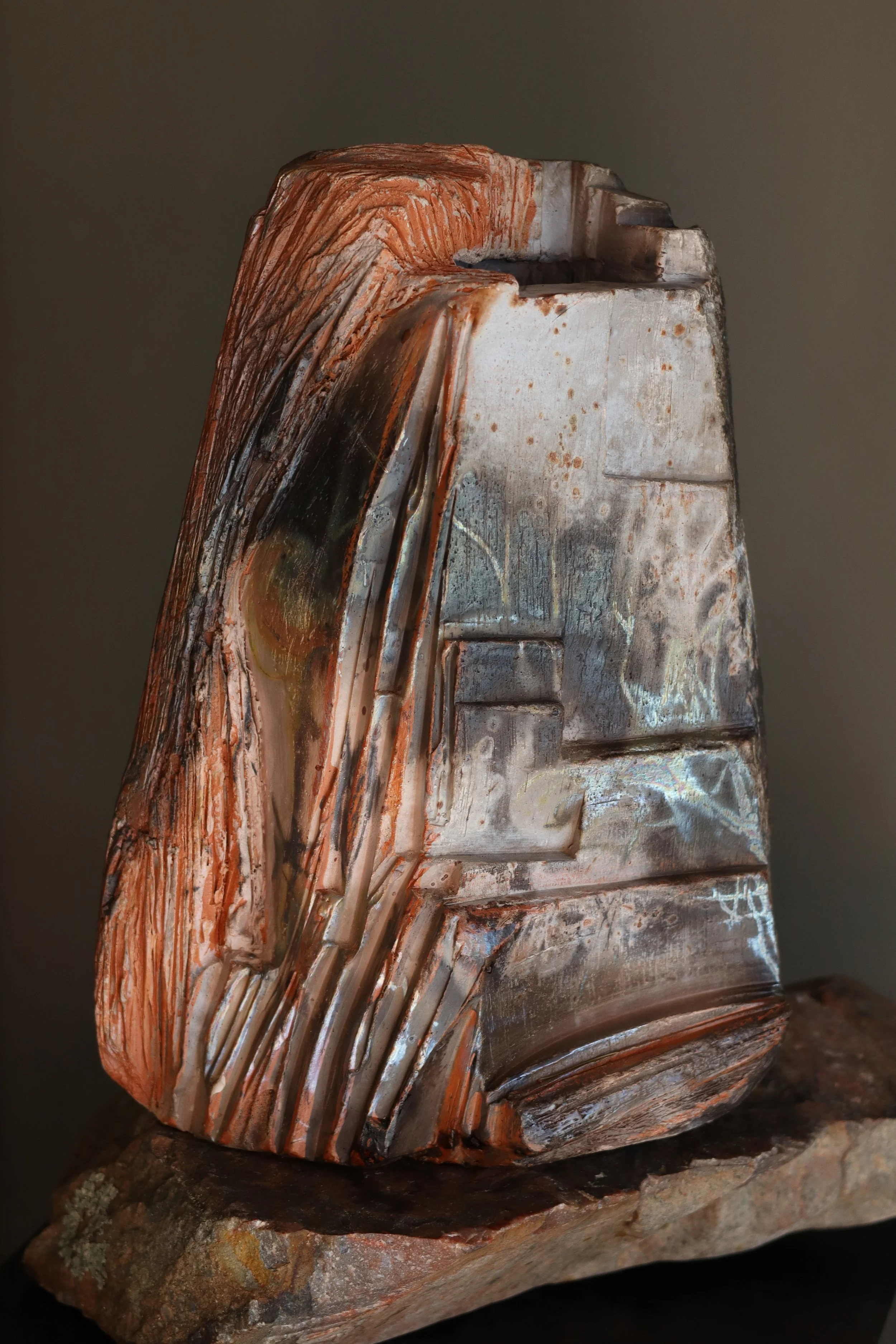


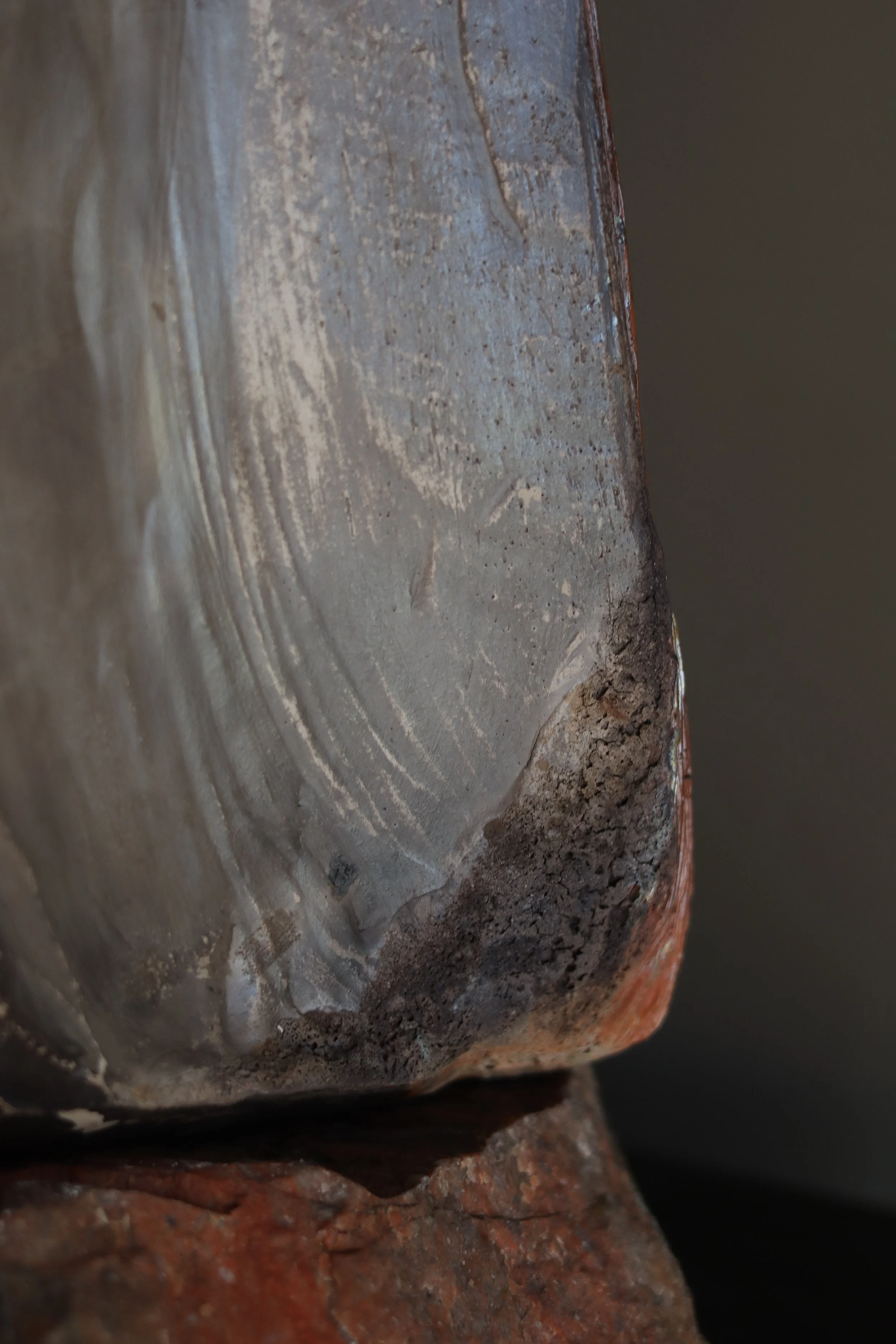
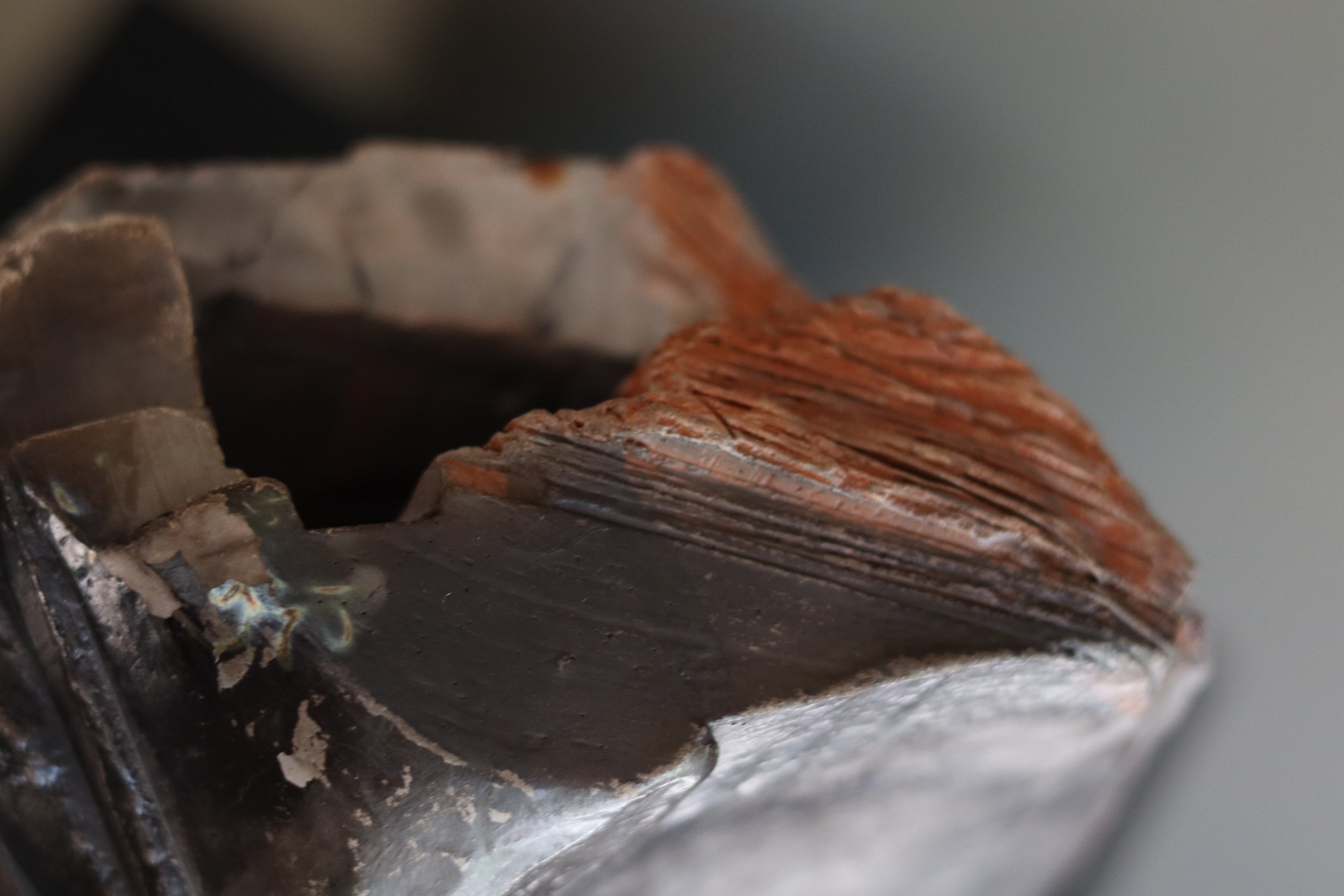
"Overburden"
Smoke Fired Raku Clay using Wild Foraged Clay for Terra Sigillata, Kurinuki Technique
A Smoke Fired Series from the Study of Losses Exhibition
Fault Line
What is Left Behind
Below the Surface
Overburden - 7×11×5
Ledge
My work investigates material memory, environmental erosion, and our evolving relationship with the land. Fracture Lines consists of hand-carved vessels created through Kurinuki, a traditional Japanese technique of hollowing solid clay blocks. Each form began as 25–50 pounds of Raku clay, slowly excavated into being, echoing the landscapes and geologic shifts I reference.
The surfaces are layered with Terra Sigillatas made from foraged and local clays, embedding the mineral signatures of place. Copper, steel wool, and native plants were introduced during firing, producing chemical reactions that left unpredictable marks. A final 24-hour smoke firing completed the transformation, embracing chance and the alchemy of fire.
The series reflects on fractures—geologic, ecological, and human-made. It speaks to the visible and invisible disruptions we impose on ecosystems, particularly the fragile balance of water and stone within the Canadian Shield and Niagara Escarpment. These vessels serve as both artifact and witness, holding space for the fractures we can no longer ignore.
Smoke Fired Raku Clay using Wild Foraged Clay for Terra Sigillata, Kurinuki Technique
A Smoke Fired Series from the Study of Losses Exhibition
Fault Line
What is Left Behind
Below the Surface
Overburden - 7×11×5
Ledge
My work investigates material memory, environmental erosion, and our evolving relationship with the land. Fracture Lines consists of hand-carved vessels created through Kurinuki, a traditional Japanese technique of hollowing solid clay blocks. Each form began as 25–50 pounds of Raku clay, slowly excavated into being, echoing the landscapes and geologic shifts I reference.
The surfaces are layered with Terra Sigillatas made from foraged and local clays, embedding the mineral signatures of place. Copper, steel wool, and native plants were introduced during firing, producing chemical reactions that left unpredictable marks. A final 24-hour smoke firing completed the transformation, embracing chance and the alchemy of fire.
The series reflects on fractures—geologic, ecological, and human-made. It speaks to the visible and invisible disruptions we impose on ecosystems, particularly the fragile balance of water and stone within the Canadian Shield and Niagara Escarpment. These vessels serve as both artifact and witness, holding space for the fractures we can no longer ignore.

